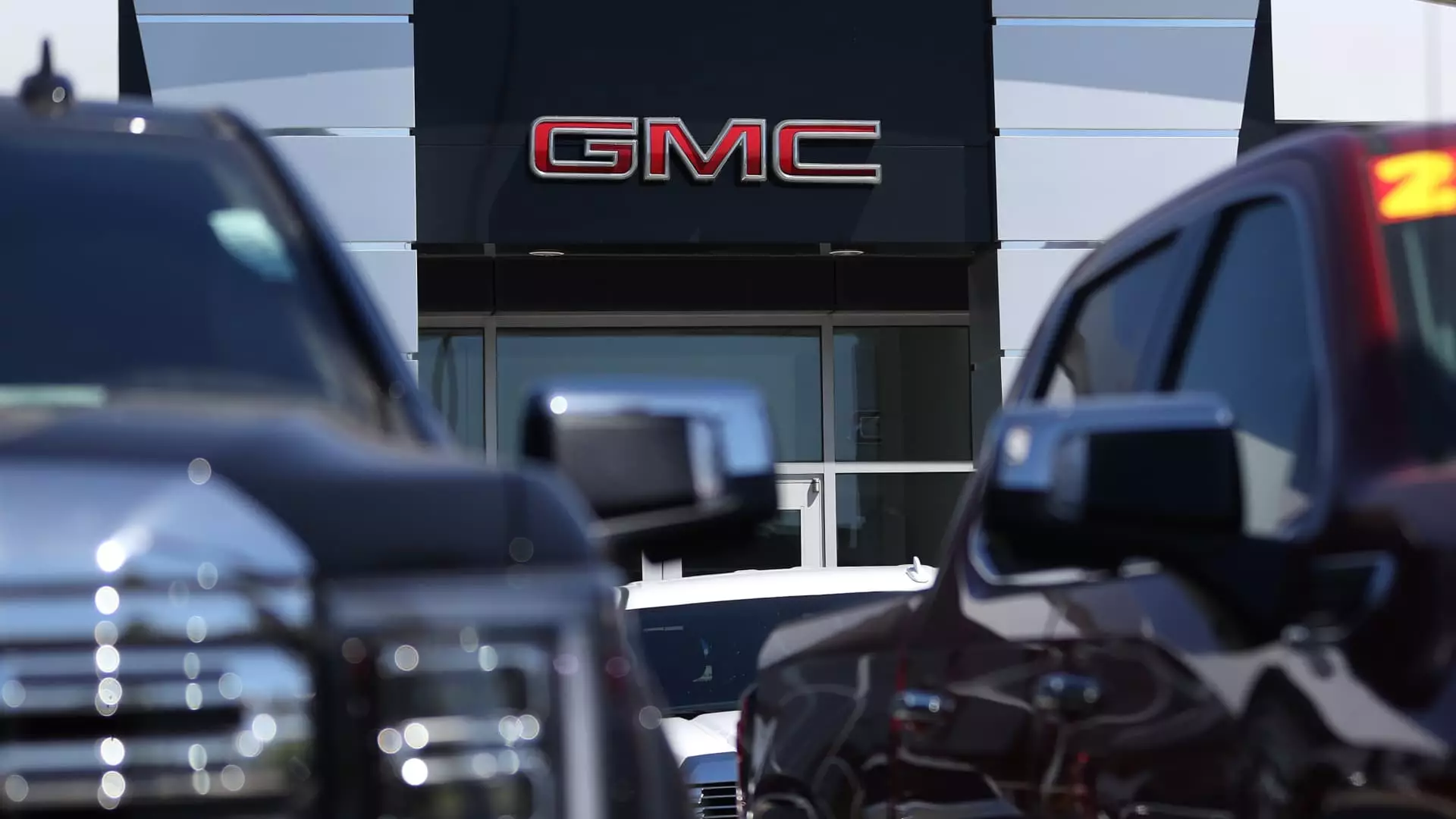General Motors (GM), a stalwart in the automotive industry, is adjusting its financial forecasts amid an evolving marketplace characterized by slow sales and wavering consumer spending. During the recent Investor Day held in Detroit, CFO Paul Jacobson revealed that the company anticipates its adjusted earnings for 2025 to remain in a “similar range” as its performance this year. This assertion is particularly bold, especially given the forecasted challenges facing the wider auto industry for the coming year. The anticipated earnings before interest and taxes (EBIT) for 2024 range from $13 billion to $15 billion, translating to approximately $9.50 to $10.50 per share, marking a significant increase from earlier projections of $12.5 billion to $14.5 billion, or $9 to $10 per share.
Given the current economic climate, where many analysts predict a looming downturn for automakers in 2025, GM’s optimistic targets highlight the company’s intention to maintain a steady trajectory amidst turbulence. The automotive sector faces evolving consumer preferences, alongside potential economic headwinds that could dampen sales. GM’s performance amidst these broader trends will serve as a crucial indicator of its resilience and strategic planning.
One of the critical components of GM’s optimistic outlook for future earnings stems from its commitment to electric vehicles (EVs). Jacobson noted that anticipated profits from EVs could soar between $2 billion to $4 billion, contributing significantly to the firm’s bottom line despite overall market slowdowns. The company’s strategy hinges upon launching eight new models that are forecasted to generate approximately nine points higher EBIT margins compared to previous versions. This optimization reflects GM’s initiative to leverage advancements in engineering, production efficiency, and sales techniques.
Moreover, the automaker aims to produce and wholesale around 200,000 EVs in North America by the close of 2024, signaling a strategic pivot towards sustainable energy solutions. While this goal has been adjusted downward from previous projections that ranged as high as 300,000 units, Jacobson emphasized that achieving profitability based on production margins is still within reach by year-end. This agility in adapting to production realities suggests GM’s commitment to boosting its profitability while navigating the complex transition to greener technologies.
To strengthen its financial outlook, GM has also implemented significant cost-reduction strategies. Fixed costs have decreased by $2 billion over the past two years, netting out depreciation and amortization. This disciplined approach to managing expenses signals a proactive strategy to enhance profitability amidst a softening market. Jacobson indicated that GM’s capital expenditure for 2025 is projected to maintain consistency with current spending levels, projected at between $10.5 billion and $11.5 billion for 2024.
These strategies not only reflect prudent financial management but also an overarching drive to buffer against the volatility that often plagues the automotive sector. With operational efficiency at the center of GM’s strategic vision, the automaker aims to remain competitive as it continues to invest in both traditional gas-powered vehicle lines and the burgeoning EV marketplace.
Despite these strategic initiatives, GM’s stock price remains under pressure. Following the investor day, shares closed at $46.01, showing negligible movement but solidifying its 28% increase for the year. However, recent downgrades and adjustments to price targets by analysts have sparked concern regarding the company’s ability to sustain momentum.
As GM prepares to unveil detailed financial guidance for 2025 in early 2024, the anticipation builds. Investors and industry analysts alike are eager to dissect the automaker’s strategies as they navigate through potential pitfalls and challenges. The automotive landscape is evolving, and with industry giants vying for dominance in an increasingly competitive marketplace, GM’s success will depend on its ability to adapt and innovate during this pivotal transition in the automotive arena.
GM’s expected path forward rests on the simultaneous management of traditional vehicle earnings while investing heavily in electric vehicle advancements. As the company engineers its future, both internally through cost reductions and externally through market adaptation, it will be crucial for it to stay ahead of consumer trends and industry demands.

